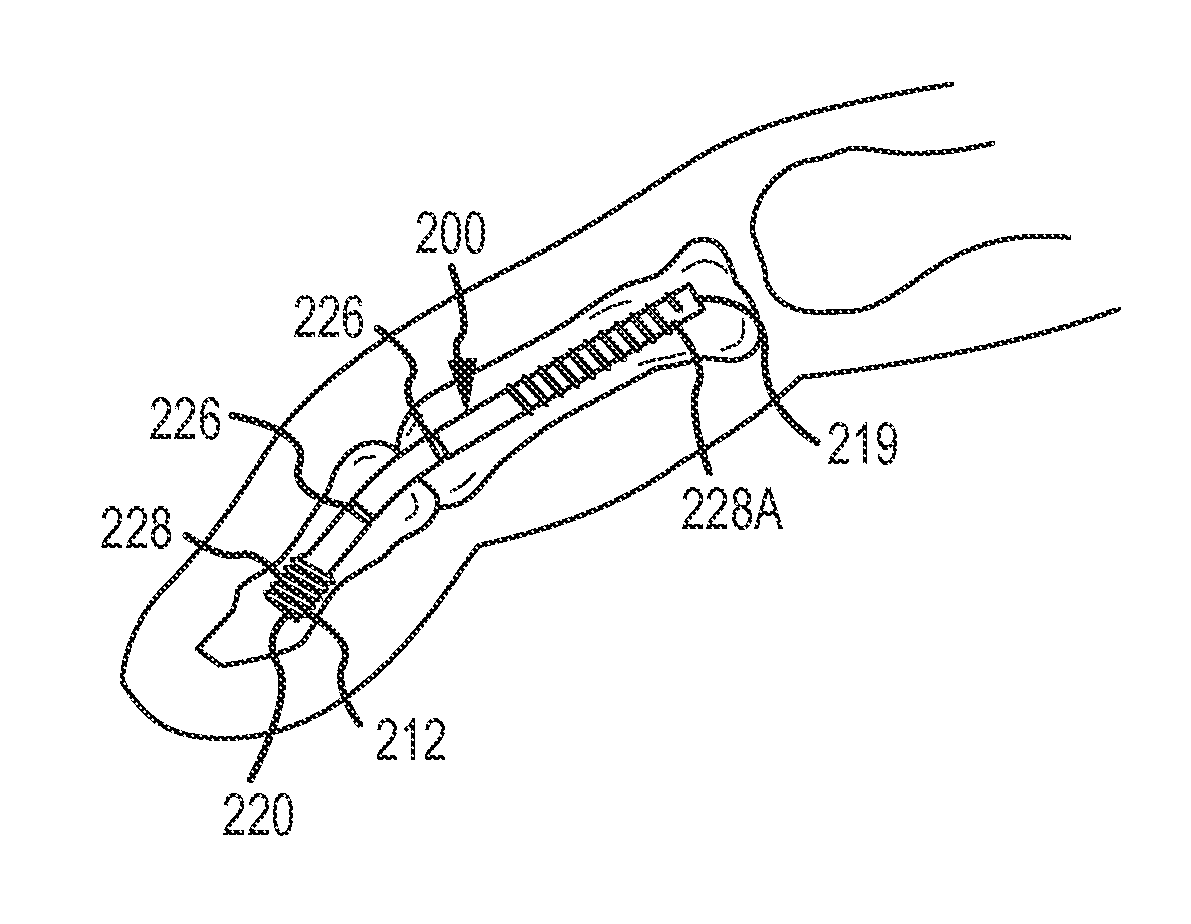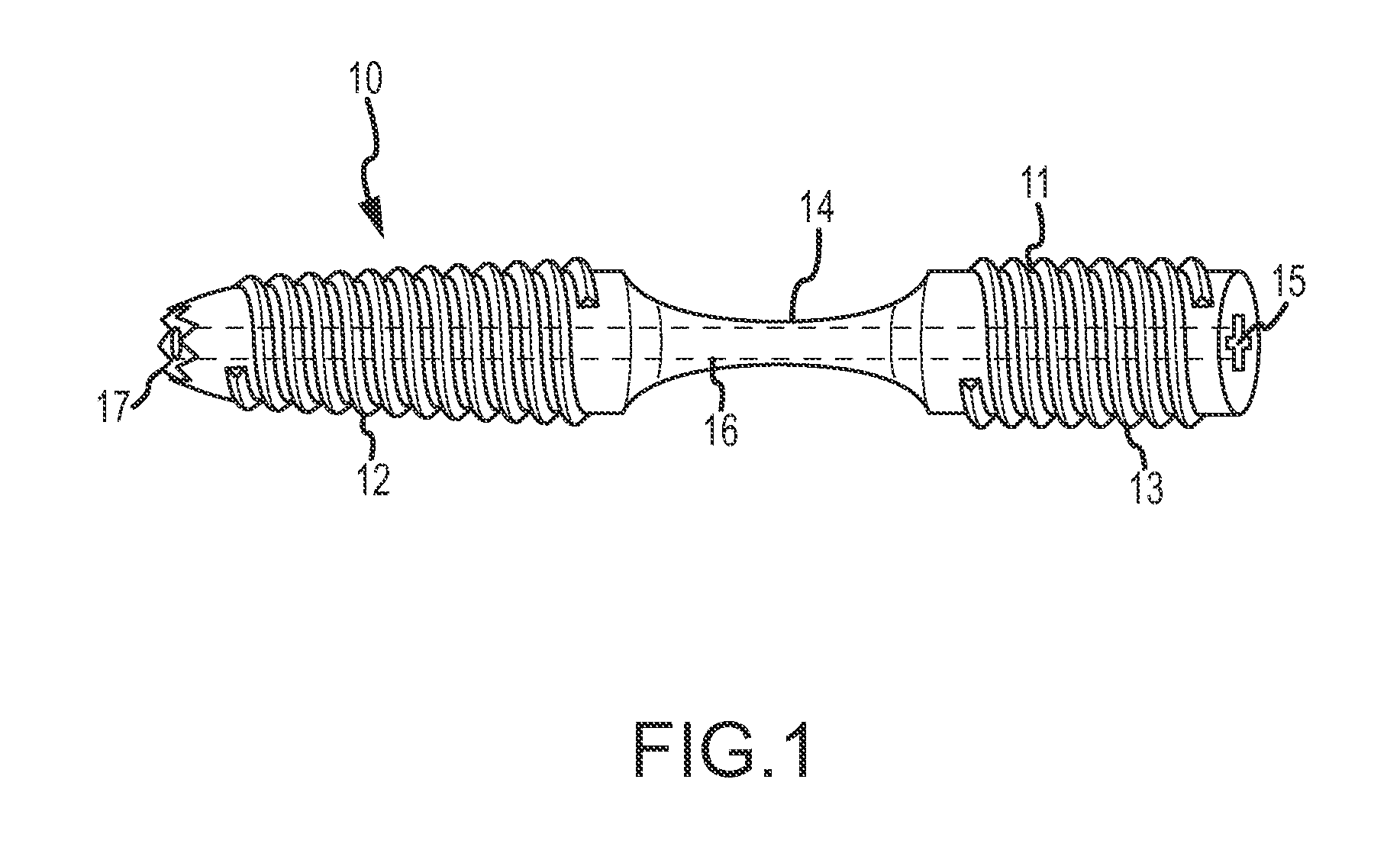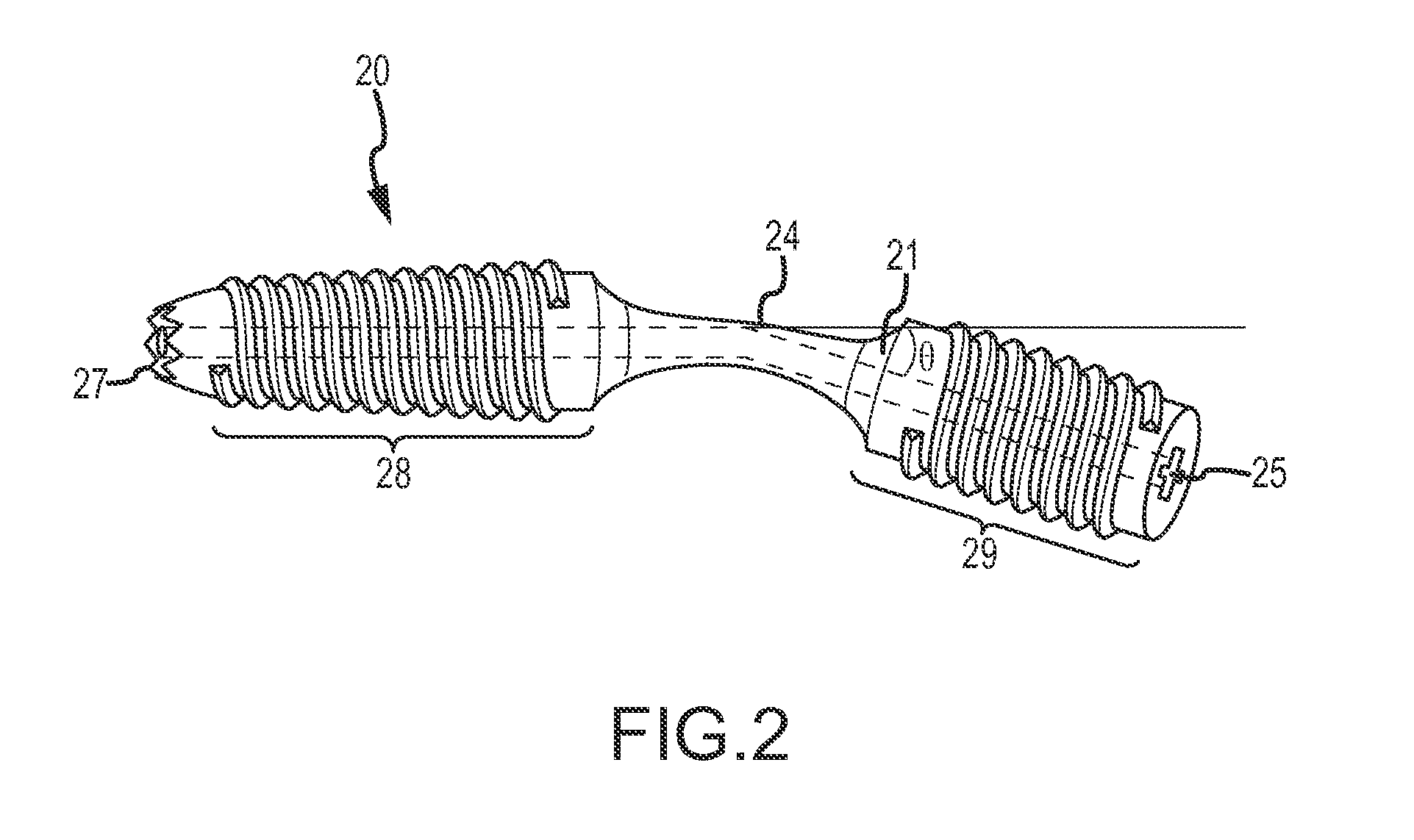Bent dip fusion screw
a technology of fusion screw and fusion screw, which is applied in the field of fusion screw, can solve the problems of pain, loss of mobility, damage to the articular surface, etc., and achieve the effect of reducing any asymmetric movement (or wobble)
- Summary
- Abstract
- Description
- Claims
- Application Information
AI Technical Summary
Benefits of technology
Problems solved by technology
Method used
Image
Examples
Embodiment Construction
[0002]1. Field of the Invention
[0003]The present invention relates to a device or method for the fusion of joints in a predetermined position.
[0004]2. Background of the Invention
[0005]The palm of the hand is made up of bones called metacarpals, and a metacarpal connects each finger and thumb to the hand. Each finger and thumb is formed of bones called phalanges. The connection of the phalanges to the metacarpals is called a “knuckle” joint or metacarpophalangeal joint (MCP joint), and acts like a hinge when the fingers or thumb are bent.
[0006]In each finger, there are three phalanges that are separated by two joints called the interphalangeal joints (IP joints). The proximal IP joint (PIP joint) is the one closest to the MCP joint. The other joint closest to the end of the finger is the distal IP joint (DIP joint). The thumb just has one IP joint.
[0007]The joints are covered on the ends with articular cartilage. Damage to the joints may occur as a result of arthritis, a sprain or fr...
PUM
 Login to View More
Login to View More Abstract
Description
Claims
Application Information
 Login to View More
Login to View More - R&D
- Intellectual Property
- Life Sciences
- Materials
- Tech Scout
- Unparalleled Data Quality
- Higher Quality Content
- 60% Fewer Hallucinations
Browse by: Latest US Patents, China's latest patents, Technical Efficacy Thesaurus, Application Domain, Technology Topic, Popular Technical Reports.
© 2025 PatSnap. All rights reserved.Legal|Privacy policy|Modern Slavery Act Transparency Statement|Sitemap|About US| Contact US: help@patsnap.com



